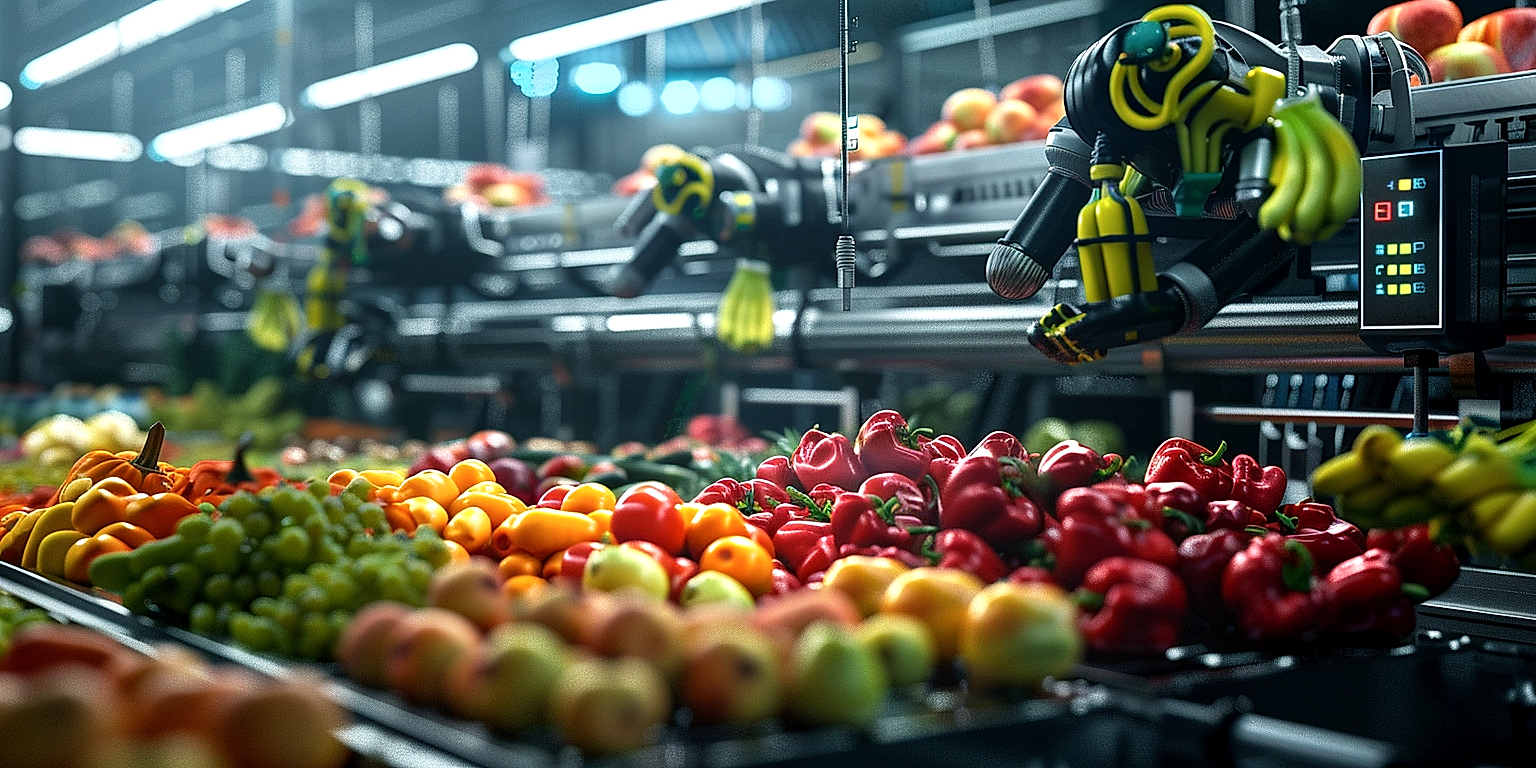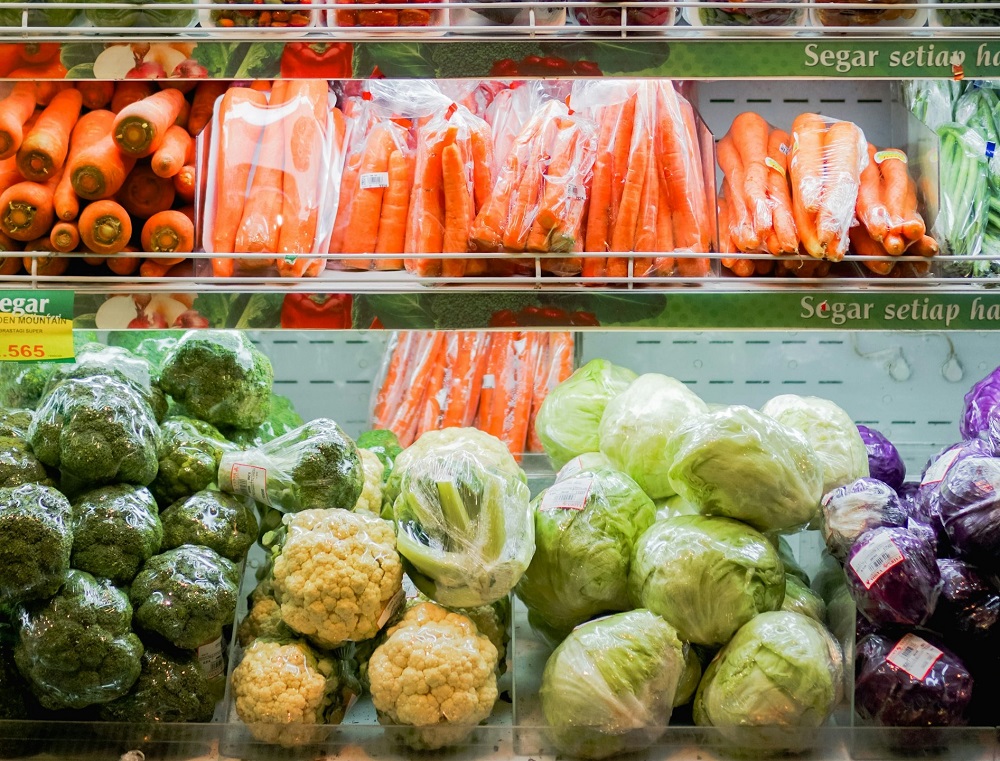In the demanding world of agriculture, efficiency is a critical factor in achieving success.
From sowing to reaping and finally delivery, every phase must function like a well-oiled machine.
One of the significant concerns is the efficient processing and distribution of produce.
This aspect of the agricultural supply chain can quickly become complex and energy-intensive without strategic logistics in place.
In view of this, various targeted solutions have emerged to tackle these challenges.
These innovative logistics strategies don’t just facilitate smoother operations but can also notably elevate business performance and profitability.
Contents
Logistics Solutions For Streamlined Produce Processing
1. Automated Sorting and Grading Systems
Automated sorting and grading systems serve as sophisticated solutions to the conventional, manual methods of sorting and grading in produce processing.
The introduction of these logistic solutions significantly enhances the speed and accuracy of sorting and grading operations.
They achieve this by using a combination of advanced technologies like sensors, cameras, and imaging systems to sort and grade produce based on parameters such as size, shape, and color.
Revolutionizing the process, these systems basically work by taking high-resolution images of the produce and analysing them against preset parameters to sort and grade the produce.
This high level of automation not only improves efficiency but also reduces the chances of human error and contamination, which can severely impact the quality of produce.
Keeping this in mind, it’s crucial to note that effective implementation of automated sorting and grading systems largely depends on the precision of the equipment and its calibration.
The systems must be suitably calibrated to sort and grade different types of produce, with the provision of adjustments for changes in parameters like colour or taste nuances.
This requires a high level of adaptability and flexibility in the system configuration.
Additionally, the implementation of these systems requires comprehensive training for operation and maintenance teams to ensure the systems are properly set up and calibrated.
Besides improving efficiency and reducing errors, automated sorting and grading systems also help in tracking and maintaining produce quality.
As the system records data on each piece of produce processed, it can provide valuable analytics and insights on the overall quality of the produce.
This can assist in making informed decisions on crop management, farm practices, and other factors impacting produce quality.
It’s worth mentioning that while the upfront costs of these systems might seem high, the long-term benefits in terms of improved produce quality and operational efficiency make it a worthwhile investment.
As technology evolves, we can anticipate even more sophisticated sorting and grading systems that can handle more complex parameters, thereby further streamlining the process of produce processing.
In summary, automated sorting and grading systems are a valuable logistic solution to conventional methods of produce processing, providing faster and more accurate sorting and grading with reduced chances of human error.
2. Implementing Real-Time Tracking Software
The shift towards the digital era has led to the development of advanced technologies and implementing real-time tracking software is one of them in the farming and logistics industry.
It ensures an efficient, more streamlined, and cost-effective process of handling produce.
This cutting-edge tool enables tracking of produce from the moment it’s sown in the field until it reaches the consumer.
Implementing real-time tracking software not only offers a transparent view of the whole journey of produce but also allows the analysis of ways to further streamline the process.
Real-time tracking systems are based on barcoding, QR coding, and RFID technologies, to name a few.
These technologies help to identify produce instantly.
This feature expedites inventory management and quality assurance checks, amongst other processes involved in the supply chain.
Additional benefits like the ability to monitor the transportation conditions help to prevent issues such as produce spoilage.
Real-time tracking also gives valuable data that can be used to forecast trends, carry out risk assessments, and implement necessary changes in the supply chain process.
This approach sets a new standard for organizing logistics operations.
While these systems require an upfront investment, the overall benefits and improvements to the process they offer often outweigh the initial cost.
Some companies might be apprehensive about moving to such sophisticated systems, especially if they are used to traditional methods of tracking.
However, as the industry continues to evolve, staying updated with new-age technologies will become crucial for businesses wanting to stay ahead of their peers.
Implementing real-time tracking software is undoubtedly a game-changer in the logistics sector, particularly in produce processing.
As businesses continue to recognize the need for efficiency and accuracy in their operations, such technologies are expected to see more widespread acceptance.
3. Advanced Cold Chain Management
Understanding the importance of cold chain management in the intricate world of produce processing is crucial.
Cold Chain management refers to the logistics solutions employed for maintaining temperature-controlled goods.
In the context of produce processing, this specifically pertains to the process of preserving and ensuring the freshness and quality of fruits, vegetables, and other perishable goods.
The strategic implementation of advanced cold chain management can dramatically decrease produce waste, enhance overall product quality, and improve efficiency.
With advancements in technology, the past systems of cold chain management have seen significant improvements and innovations.
Companies now utilize sophisticated refrigeration systems and digital temperature tracking to preserve an ideal atmosphere for their produce at every step of the supply chain.
Using these advanced systems, perishables are stored and transported at ideal temperatures, thereby extending their shelf life and reducing waste.
Moreover, innovative cold chain logistics solutions contribute towards mitigating loss during the transportation of the perishables.
The use of high-tech sensors and real-time temperature tracking enables meticulous management of temperature-sensitive goods.
These sensors are embedded in containers, transport vehicles, and storage facilities, providing real-time information on temperature changes.
If at any point, the temperature fluctuates beyond the ideal parameters, alerts are sent to take immediate corrective action.
The robust integration of physical machinery and digital systems ensures the produce does not undergo undue stress that could adversely affect its quality and freshness.
Moreover, advanced cold-chain management policies also consider issues such as cross-contamination and maintaining hygiene standards.
Therefore, cold-chain logistics solutions are not only about temperature control but also involve elements like packaging, storage conditions, hygiene, and sanitation.
By implementing rigorous cold-chain management protocols, businesses can ensure an optimal environment at all times for the produce, thereby strengthening market position and customer trust.
4. Use of Robotic Harvesting Equipment
In the realm of logistics solutions for streamlined produce processing, the implementation of robotic harvesting equipment possesses a central role.
Robotic hardware has arrived at a point of finesse where it can handle crops and fruits with the same care and precision as human hands, heralding a new age for harvesting.
The clarity it brings to the harvesting process reduces spoilage by minimizing physical damage to the produce.
These automated harvesting systems reduce man-hours, increase efficiency, and ensure an unbroken harvesting process, making them an instrumental part of modern agriculture.
Indeed, with these developments, farming has taken a leap from being labor-intensive to becoming a sophisticated, technology-driven industry.
Replacing human labor with robots eliminates the vulnerability of the harvesting process to labor shortages, ensuring an uninterrupted supply of high-quality produce from farms to processors.
Further, robotic harvesting equipment, built with advanced sensors and AI, can distinguish ripe produce from those that need more time, ensuring each fruit or vegetable is harvested at just the right stage of maturity.
This precision highlights another benefit; the consistency in the quality of produce.
The efficiency and speed at which robots harvest also contribute to reducing field times and enable more frequent harvesting.
From a business standpoint, robotic harvesting equipment is a worthy investment that eventually reduces costs and increases revenues significantly.
Moreover, automated harvesting methods illustrate a safer working environment by reducing the risk of injuries common in manual farming processes.
This aspect aligns with the global standards of environmentally sustainable and ethically responsible farming.
Additionally, reducing dependency on human labor, the use of robotic harvesting equipment also mitigates the problem of seasonal labor shortage.
With the incorporation of real-time data collection, these robotic systems provide essential data, aiding farmers in making informed decisions.
This vast collection of data can be utilized for detailed analysis, a key aspect that makes all the difference in the quality, consistency, and profitability of farm yields.
Indeed, the utilization of robotic harvesting equipment is a game-changer that transforms the farming industry into a high-precision, tech-enabled sector.
5. Introducing AI in Quality Control
Quality control is a critical factor in the produce processing sector, directly influencing the overall performance and profitability of the business.
Integrating Artificial Intelligence (AI) in quality control practices has been found to drastically improve the efficiency, accuracy, and effectiveness of the quality control process.
AI technology can optimize the accuracy of sorting and grading systems in a produce processing operation.
By leveraging advanced computer vision, AI platforms can automatically separate, categorize, and assign quality grades to different produce items based on externally visible factors such as color, size, shape, texture, and apparent defects.
This implementation of AI in the quality control process enables thorough, accurate assessments at a pace that easily surpasses manual evaluations, enhancing the overall speed and efficiency of the produce processing workflow.
Moreover, AI software can also analyze historical data to predict possible quality issues and recommend preventative measures before these problems occur.
This not only helps to maintain the quality of the produce but also reduces waste and enhances productivity.
Another benefit of introducing AI in quality control is the automated generation of reports and analytics.
The system can gather data from every stage of the produce processing operation and generate comprehensive reports that provide valuable insights into the overall performance of the operation, areas of improvement, and opportunities for growth.
AI-powered quality control systems also reduce human intervention.
Not only does this mean fewer errors, but it also results in substantial cost savings as companies can allocate their human resources to other critical areas of the business.
More so, AI technology’s machine learning capabilities make it adaptable and flexible.
Over time, the system can learn, improve, and refine its operations, continually enhancing its accuracy and reliability.
This is particularly advantageous in the ever-evolving produce processing industry, where adaptability is key for sustained growth and profitability.
Implementing AI in quality control also augments the company’s ability to trace and recall products, thus enhancing food safety.
The system keeps track of all the produce items processed, their quality grading, and their dispatch details, enabling quick and efficient recalls if a quality issue is identified.
While the initial cost of implementing AI in quality control can be substantial, the long-term benefits – better quality control, improved efficiency, reduced waste, and effective decision-making– make it a worthy investment for businesses in the produce processing sector.
The Bottom Line
The adoption of advanced technologies, such as automated sorting and grading systems, real-time tracking software, efficient cold-chain management systems, robotic harvesting equipment, and AI-powered quality control, has indisputably revolutionized the agriculture industry.
These tech-driven developments have not only led to reduced workload and increased efficiency but also provided precise data at every level, leading to more effective decision-making.
The implication is clear; leveraging technology and smart automation tools are the way forward for the agricultural industry to ensure sustainability, profit maximization, and high-quality produce.




